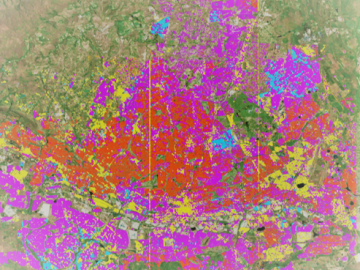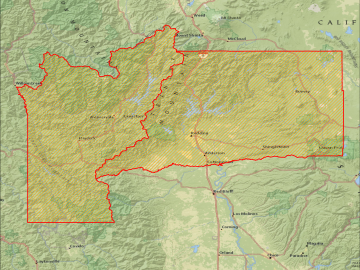
Filter News
Area of Research
- Biological Systems (2)
- Biology and Environment (18)
- Clean Energy (22)
- Climate and Environmental Systems (2)
- Computational Engineering (1)
- Computer Science (2)
- Data (1)
- Fusion and Fission (1)
- Materials (15)
- National Security (17)
- Neutron Science (5)
- Nuclear Science and Technology (2)
- Nuclear Systems Modeling, Simulation and Validation (1)
- Supercomputing (34)
Date
News Topics
- 3-D Printing/Advanced Manufacturing (2)
- Advanced Reactors (1)
- Artificial Intelligence (22)
- Big Data (28)
- Bioenergy (3)
- Biology (5)
- Biomedical (6)
- Biotechnology (2)
- Buildings (3)
- Chemical Sciences (2)
- Clean Water (2)
- Climate Change (17)
- Computer Science (32)
- Coronavirus (2)
- Cybersecurity (3)
- Decarbonization (2)
- Emergency (1)
- Energy Storage (1)
- Environment (24)
- Exascale Computing (6)
- Frontier (6)
- Fusion (1)
- Grid (5)
- High-Performance Computing (12)
- Hydropower (2)
- Isotopes (1)
- ITER (1)
- Machine Learning (11)
- Materials Science (5)
- Mathematics (2)
- Microscopy (2)
- Molten Salt (1)
- Nanotechnology (4)
- National Security (17)
- Net Zero (1)
- Neutron Science (2)
- Nuclear Energy (3)
- Physics (4)
- Quantum Science (1)
- Security (3)
- Simulation (6)
- Space Exploration (1)
- Statistics (1)
- Summit (8)
- Sustainable Energy (5)
- Transportation (5)
Media Contacts

A study led by Oak Ridge National Laboratory explored the interface between the Department of Veterans Affairs’ healthcare data system and the data itself to detect the likelihood of errors and designed an auto-surveillance tool

Oak Ridge National Laboratory is using artificial intelligence to analyze data from published medical studies associated with bullying to reveal the potential of broader impacts, such as mental illness or disease.

Using artificial neural networks designed to emulate the inner workings of the human brain, deep-learning algorithms deftly peruse and analyze large quantities of data. Applying this technique to science problems can help unearth historically elusive solutions.

Geospatial scientists at Oak Ridge National Laboratory analyzed three cities of varying infrastructures to look for patterns of electricity use and locate “dark spots” where informal neighborhoods may lack access to power.

Oak Ridge National Laboratory’s latest Transportation Energy Data Book: Edition 37 reports that the number of vehicles nationwide is growing faster than the population, with sales more than 17 million since 2015, and the average household vehicle travels more than 11,000 miles per year.

OAK RIDGE, Tenn., March 4, 2019—A team of researchers from the Department of Energy’s Oak Ridge National Laboratory Health Data Sciences Institute have harnessed the power of artificial intelligence to better match cancer patients with clinical trials.

Gleaning valuable data from social platforms such as Twitter—particularly to map out critical location information during emergencies— has become more effective and efficient thanks to Oak Ridge National Laboratory.

Oak Ridge National Laboratory scientists analyzed more than 50 years of data showing puzzlingly inconsistent trends about corrosion of structural alloys in molten salts and found one factor mattered most—salt purity.

As hurricanes barrel toward the coastlines and wildfires rage in arid regions of the United States, scientists at the Department of Energy’s Oak Ridge National Laboratory are providing critical geospatial data to support first responders as they work to save lives and property.



